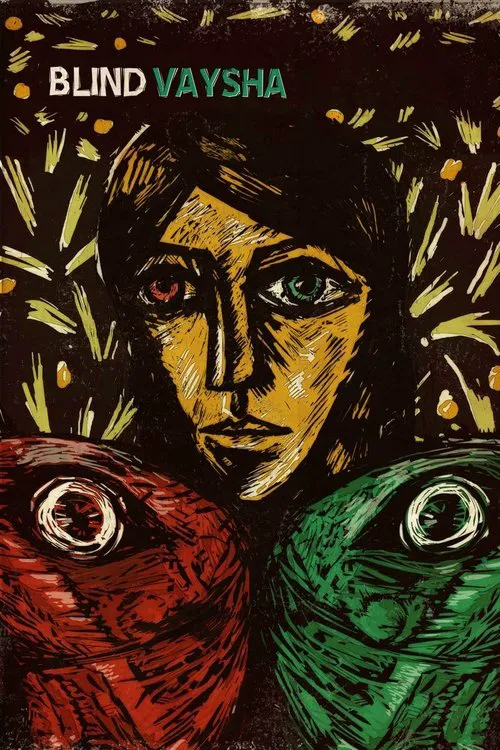Blind Vaysha

Plot
In the poignant animated short film "Blind Vaysha," the world is refracted through the extraordinary gaze of a young girl who exists in a perpetual state of divided vision. Born with a singular condition that sets her apart, Vaysha's life is a kaleidoscope of past and future, existing in stark contrast to the elusive present. This dichotomy becomes a potent metaphor for the human experience, as she navigates a reality where every memory is forever trapped in the rearview, while every prospect of the future is a foreboding, unseen entity that haunts her every waking moment. The film opens with a beautiful, ethereal sequence of Vaysha's birth, set against a backdrop of shimmering lights and undulating colors. We see her first glimpse of the world with her left eye, which grants her a fleeting view of the past. As the camera pans across a serene landscape, we witness Vaysha's early years unfolding with simplicity and joy. Her mother rocks her gently in a chair, and we see the tender moments of their bond, forever trapped in a bygone era. This idyllic vision is juxtaposed with the desolate prospect of her right eye, which reveals only an uncertain, dark future. The contrast between these two visions of reality becomes a recurring motif in the film, serving as a poignant reminder of the fragility of Vaysha's existence. As the narrative progresses, we see Vaysha grow into a young woman, struggling to reconcile the irreconcilable. Her right eye continues to reveal a world shrouded in menace and danger, a reality that seems to constantly shift and morph. Her mother's efforts to shield her from the darkness prove futile, and Vaysha is drawn inexorably towards a destiny that seems predetermined. Meanwhile, her left eye offers her a fleeting glimpse of the past, which Vaysha attempts to cling to as a source of comfort and familiarity. The animation in "Blind Vaysha" is truly breathtaking, with a cinematic quality that elevates the film to an altogether higher plane. The use of color is particularly noteworthy, as Ushev's palette oscillates between the warm, golden hues of Vaysha's memories and the cold, monochromatic tones of her future visions. The latter are depicted as an eerie, industrial landscape of steel and concrete, a stark contrast to the lush, natural settings of her childhood. This dichotomy serves to heighten the sense of foreboding, as Vaysha's right eye offers her a glimpse of a world that is both dark and unforgiving. Ushev's use of metaphor is equally compelling, as Vaysha's divided vision becomes a powerful symbol for the human condition. Her inability to see the present – the blind spot that separates her past and future – becomes a potent metaphor for the fragility of life itself. We are all condemned to move ever forward, our gaze perpetually fixed on the horizon, with the past and future existing in an eternal dance. Vaysha's unique condition serves to underscore the importance of living in the present, of appreciating the fleeting moments of beauty that populate our lives. Ultimately, "Blind Vaysha" is a film that invites us to reflect on our own relationship with time. What is the nature of memory, and how does it shape our understanding of ourselves? What lies ahead, and how do we prepare ourselves for the unknown? These are the questions that Ushev poses through Vaysha's extraordinary story, and the film offers a poignant, affecting response. As we watch, transfixed by the hypnotic beauty of Ushev's animation, we are drawn into Vaysha's world – a world of divided visions, of perpetual uncertainty, and of the boundless power of the human spirit to find meaning in the void.
Reviews
Recommendations



